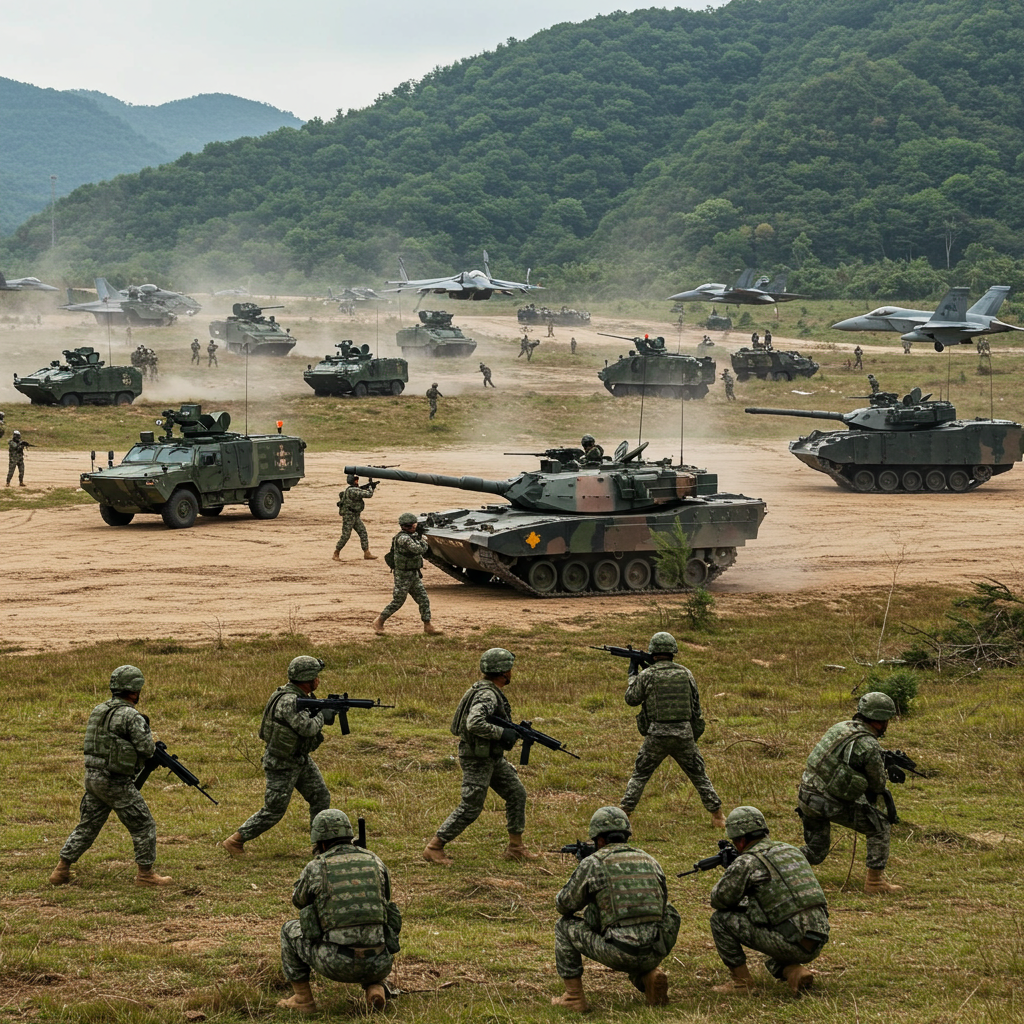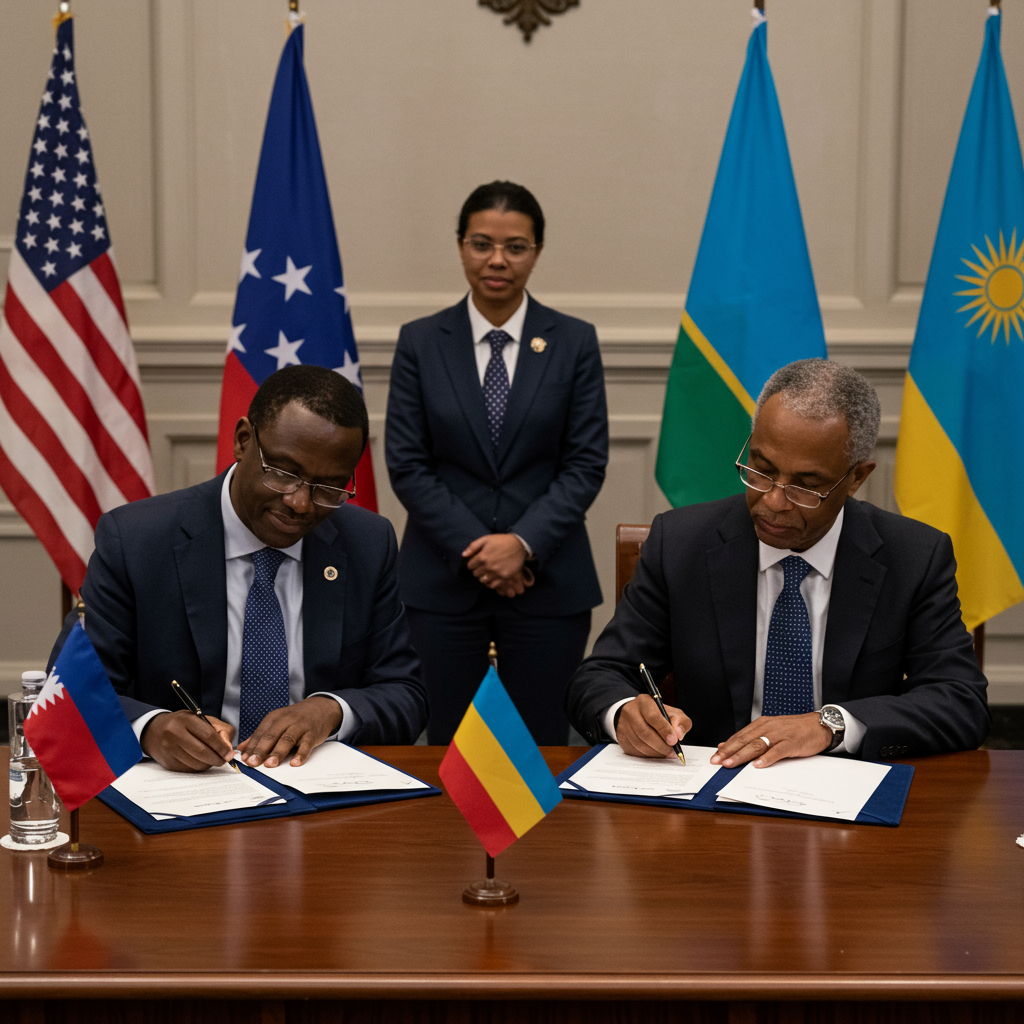taiwan has commenced its largest-ever annual war games, exercises designed to simulate and test the island’s defenses against a potential attack or invasion from mainland China. These critical drills, known as the Han Kuang exercises, are a cornerstone of taiwan’s strategy to bolster its military readiness amidst rising cross-strait tensions. The realistic scenarios role-played during the 10-day event highlight Taiwan’s urgent focus on preparing for a range of potential threats from Beijing, from crippling cyber and communications attacks to large-scale amphibious assaults.
The exercises unfold at a time of significant global instability and increased pressure from China. Just days before the drills began, a Chinese military spokesperson reiterated Beijing’s assertion of “inevitable reunification” with the island. These remarks underscore the political backdrop against which Taiwan conducts its defense planning, constantly navigating the complex relationship with its powerful neighbor. Taiwan’s defense officials are actively incorporating lessons learned from recent conflicts, particularly the ongoing war in Ukraine, to refine their strategies for potential real-world combat scenarios. This adaptation reflects a pragmatic approach to defense, focusing on resilience and the ability to respond effectively under duress.
Simulating Modern Warfare Threats
This year’s Han Kuang exercises are specifically tailored to address the evolving nature of potential attacks. A primary focus in the early stages is on countering hypothetical assaults on Taiwan’s critical command and communication systems. Military strategists anticipate that any major offensive from Beijing would likely begin with efforts to disrupt Taiwan’s ability to coordinate its defense. The drills assess the military’s capacity to adapt and maintain operational effectiveness even if centralized command structures are compromised, emphasizing the need for decentralized decision-making and robust alternative communication methods.
Later phases of the exercise transition to simulating direct combat scenarios. This includes extensive anti-landing operations, practicing the fortification of ports and other potential landing points along Taiwan’s coast. With the island situated just 160km (about 100 miles) from the Chinese mainland across the Taiwan Strait, securing these coastal areas is paramount to repelling an invasion force. The drills involve realistic simulations of defending against amphibious assaults, a complex military maneuver that would be central to any large-scale invasion attempt by the People’s Liberation Army (PLA).
Integrating New Capabilities and Grey Zone Tactics
A significant aspect of the current exercises is the integration of new military hardware. For the first time, Taiwan is utilizing US-made High Mobility Artillery Rocket Systems (HIMARS), acquired from Lockheed Martin. These advanced rocket systems are designed for rapid deployment and precision strikes, adding considerable firepower to Taiwan’s ground forces. Additionally, Taiwan’s domestically developed Sky Sword surface-to-air missiles are being employed in the drills, showcasing the island’s progress in indigenous defense technology. The exercises also feature other recently acquired equipment, including modern tanks and waterborne drones, signaling a comprehensive effort to modernize Taiwan’s military capabilities across multiple domains.
The drills are also tackling the challenge of China’s “grey zone tactics.” These refer to coercive actions that fall short of overt warfare but are intended to intimidate, harass, and gradually assert control without crossing the threshold into open conflict. The original article notes these tactics can include actions like increased patrols, incursions into Taiwan’s claimed air defense identification zone (ADIZ), and harassment of vessels. External research, like that from CSIS, highlights that China is increasingly prepared for “quarantine” operations, led by law enforcement like the China Coast Guard (CCG) and Maritime Safety Administration (MSA), rather than solely military forces.
The Threat of a “Quarantine” Scenario
A quarantine is distinct from a military blockade. It involves law enforcement-led control over maritime or air traffic to Taiwan, aiming to assert sovereignty and coerce the island without necessarily resorting to kinetic force. External analysis suggests this is a more likely near-term scenario than a full-scale invasion. China has significantly ramped up the capabilities of its CCG and MSA, now possessing the world’s largest coast guard fleet, supported by a vast maritime militia. These civilian-identified “white-hulled” vessels complicate the response for Taiwan and potential allies, who may hesitate to engage militarily against non-naval ships.
China’s geographic proximity to Taiwan, particularly the concentration of major Taiwanese ports on the western coast facing the mainland, provides Beijing with strategic advantages for implementing such a quarantine. The goal would be to disrupt Taiwan’s economy through pain and coercion, potentially by requiring inspections of commercial vessels or creating a chilling effect on international shipping. Taiwan’s Han Kuang drills include preparing defenses against such layered tactics, recognizing that a future conflict may not begin with a traditional military invasion but with these subtle yet disruptive grey zone actions.
Record Reservist Participation and Training
The scale of this year’s Han Kuang exercises is unprecedented, involving a record 22,000 reservists alongside active-duty personnel from the army, navy, and air force. This high level of reservist participation underscores Taiwan’s strategy of building a resilient defense force that can rapidly mobilize civilian support in a crisis. Training observed in locations like an emptied junior high school in Taoyuan highlights the integration of reservists into realistic scenarios, including weapons training and familiarization with operational procedures in civilian environments that could become part of the battlefield.
Integrating reservists is crucial for expanding the effective fighting force and ensuring that the population is prepared to support defense efforts. It also sends a message about Taiwan’s determination to defend itself and the broad base of support for national defense. The readiness of a large, trained reservist force is a key component of Taiwan’s deterrence posture, complicating any potential aggressor’s calculations by demonstrating the depth of resistance they would face.
Geopolitical Stakes and International Implications
The drills occur amidst heightened tensions in the Taiwan Strait, a key flashpoint in the broader competition between the United States and China. China views Taiwan as a breakaway province and has increased military activities around the island significantly over the past five years. While Taiwan’s democratic government asserts its sovereignty and maintains that only the island’s people can decide its future, Beijing has never renounced the use of force to achieve reunification.
External analyses from sources like Brookings point to the terrifying implications of a potential US-China conflict over Taiwan, noting that it could rapidly escalate and involve both economic superpowers. While a full-scale invasion is seen as incredibly difficult for China due to amphibious assault challenges and Taiwan’s potential defenses, scenarios like a blockade or quarantine are considered more credible threats. The possibility of such a conflict escalating into a wider war, potentially involving preemptive strikes on regional bases, is a stark reminder of the high stakes, as discussed in analyses applying game theory to the potential dynamics of escalation.
Taiwan’s Han Kuang exercises are therefore not just military drills; they are a public demonstration of Taiwan’s commitment to self-defense, a crucial element of deterrence, and a necessary preparation for a range of complex potential scenarios. By realistically simulating various attack types and integrating both active military and reservist forces with new equipment, Taiwan aims to strengthen its ability to resist coercion and defend its sovereignty against mounting pressure.
Frequently Asked Questions
What is the purpose of Taiwan’s Han Kuang military exercises?
The Han Kuang exercises are Taiwan’s largest annual war games, designed to simulate a range of attack and invasion scenarios by mainland China. Their primary purpose is to test the readiness and capabilities of Taiwan’s armed forces, including active personnel and reservists, to defend the island. The drills focus on assessing the military’s response to threats like attacks on command systems, amphibious landings, and grey zone tactics, incorporating lessons from recent global conflicts to improve defensive strategies.
How are Taiwan’s military drills adapting to potential Chinese “grey zone” tactics or specific attack types?
Taiwan’s drills are increasingly focused on countering modern and non-traditional threats. This includes specific simulations targeting China’s “grey zone tactics,” which involve coercive actions below the threshold of open warfare, such as harassment operations by coast guard vessels. The exercises also prioritize defending against attacks on crucial command and communication systems, acknowledging that such disruptions are likely to precede a full-scale invasion. By simulating these specific threats, Taiwan aims to build resilience and adapt its response strategies.
Why are these Taiwan drills happening now, and what is China’s reaction?
The Han Kuang exercises are an annual event but are taking place this year amidst significantly heightened tensions and increased Chinese military pressure around Taiwan. The timing follows recent statements from Beijing reiterating its claim over the island and the inevitability of reunification. China’s Ministry of National Defense has dismissed the drills as a “bluffing and self-deceiving trick” by Taiwan’s government, asserting that they cannot prevent “inevitable reunification.” Taiwan also reported that China appeared to attempt to disrupt drill preparations through harassment operations.
Conclusion
Taiwan’s large-scale Han Kuang military exercises represent a vital effort to prepare for the complex reality of potential conflict with China. By simulating scenarios ranging from sophisticated communication attacks to amphibious assaults and grey zone tactics, Taiwan is actively working to bolster its defenses, integrate new technologies, and mobilize its reservist force. These drills serve as a critical test of readiness, a signal of Taiwan’s determination to defend itself, and a necessary adaptation to the evolving geopolitical landscape and the increasing pressure from Beijing. The exercises underscore the high stakes in the Taiwan Strait and Taiwan’s unwavering commitment to ensuring its future is determined by its own people.




